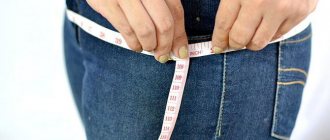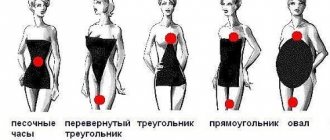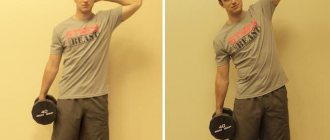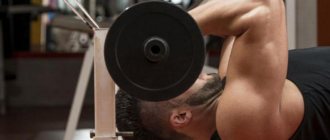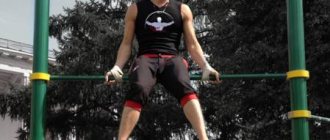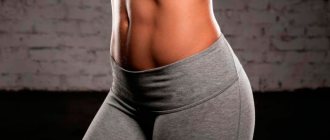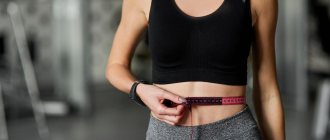Not a good sign
Its circumference is more than 102 cm - this is a clear sign of abdominal obesity. This type of fat in the human body is perhaps the most dangerous. Due to excessive obesity, type 2 diabetes mellitus and cardiovascular diseases can develop. Decreased insulin activity increases the release of free fatty acids, which contributes to the process of joint destruction. The situation is worsened by the fact that due to increased body weight, the load on the human skeleton increases.
If this happens, you should not think that the situation is hopeless. Everything can be corrected. This is something worth striving for. After all, even a small decrease in waist circumference by just 4 cm is equivalent to the health benefits obtained from reducing body weight by 5-10%. Even such small progress improves carbohydrate and fat metabolism in the body, which helps lower blood pressure.
What information do I need to include in my order?
When placing an order, you must specify the employee's measurements as accurately as possible, including: height, chest and waist circumference (for men), hip circumference (for women).
It is important to measure all employees correctly using these instructions rather than relying on information provided by employees. As they say, it’s better to measure seven times...
The correctness of taking clothing sizes and placing an order directly affects the result of tailoring. If incorrect information is provided in the order or the clothes are sewn in inappropriate sizes, the result will not meet expectations.
Determination of waist norm
So, the first thing to do is measure your waist circumference. It's important to do it right. The measurement is carried out with a regular centimeter tape. The girth for measurement is taken not at the level of the navel, but in the middle between the bottom line of the lower rib and the top point of the pelvic bone. Measurements are recorded as you exhale and taken twice. If the measurement values differ by 1 cm, the average result is taken.
What waist circumference should men have? Although an adjustment is made for body height, 102 cm, as noted earlier, is already a problem. We can say that the upper limit should be 94 cm. If a man’s waist exceeds 96 cm, then there is cause for concern. Then the person needs to take action to take control of the situation as soon as possible.
To understand in detail what waist size men should have, you need to consider the waist-height index. In short, this index is an indicator that characterizes a person’s physique. The body mass index, which is often used to check the correspondence of weight to height, does not reflect the situation with the physique as correctly as compared to the waist-height index. The latter is based not on weight, but on waist circumference. Because weight characterizes not only the volume of fat, but consists of different components. This indicator, by the way, is used by athletes, including professional ones. Men actively involved in bodybuilding regularly check their waist size before and after training, as well as during the process. It is very important for them to have a low fat content with a high muscle content. But the question of what a man’s waist should be is relevant not only for athletes. After all, which guy wouldn’t want to have a beautiful figure, without excess belly fat? And who needs health problems?
For women and men:
- Measurements are carried out with a minimum amount of clothing or in thin clothing that does not distort the shape and size of the body and does not affect the accuracy of measurements. When determining bust circumference, measurements are taken through a bra without pads, made of thin material that does not have metal or other supports.
- Girths are measured with a centimeter tape. The tape should adhere to the body without deforming the soft tissue by tension.
- Basic measurements for determining size: Neck circumference: Neck circumference, measured 2 cm below the Adam's apple and at the level of the 7th cervical spine;
- Chest circumference: Maximum horizontal circumference measured during normal breathing. The measuring tape passes along the shoulder blades, armpits and chest (protruding points of the mammary glands);
- Bust: (chest for women): Maximum horizontal circumference measured during normal breathing. The person stands straight, the tape passes through the shoulder blades, armpits and protruding points of the mammary glands;
- Waist: The circumference of the natural waistline between the ilia and lower ribs. When measuring, the person breathes normally, stands up straight with a relaxed stomach;
- Hip circumference: Horizontal circumference measured at the fullest point of the buttocks;
- Round the result obtained to the nearest value from the standard range of sizes 80, 84, 88, 92, 96..., while:
- If you rounded down to a smaller size, then clothes with a tight silhouette will fit your figure somewhat more tightly than on a figure whose size is equal to the smaller size (the size to which you rounded up).
If you round up to a larger size, then clothes with a tight silhouette will fit your figure more freely than on a figure whose size is equal to the larger size (the size to which you rounded up).
To determine your size, it is a mistake to rely on the size indicated on the label of the clothes you are wearing, even if they fit you perfectly.
It is important to know:
- To determine the size of clothing belonging to the waist group (skirts, trousers), it is necessary to measure the hip circumference for women, and the waist circumference for men.
- To determine the size of clothing related to the shoulder group (blouses, vests, etc.) for both men and women, it is necessary to measure the chest circumference.
- Hip circumference and waist circumference can affect the final value of your size if their values go beyond the full group laid down by the manufacturer for women's and men's clothing models, respectively.
Index norm for men
What waist size should men have for a particular height? Using the waist/height ratio mentioned above, a guy will be able to determine whether his waist size is within the normal range. For this, in addition to a measuring tape, you will also need a calculator. Here you will have to deal with specific numbers. The data obtained from the measurement in centimeters must be divided by the height in centimeters. The number that comes out as a result of division is the “waist-height” index. How to use these numbers? You can write down the following values for yourself, of course, they differ from the norms for women: the index norm for men is 0.43-0.53. With an indicator of 0.54 and above, a man can be “diagnosed” as overweight and obese. An indicator of 0.58 means severe obesity. But you should not think that the lower these numbers, the better. For example, an indicator equal to or less than 0.42 may mean severe thinness. A value of 0.35 means pathological thinness and underweight in a man. Therefore, there is a lower limit for this indicator (0.42).
Taking measurements
The procedure will require a measuring tape. If you don’t have it at hand, you can use a lace and a school ruler. Let's look at the main parameters and where to measure them:
- Chest circumference. Stand up straight, straighten your back. Throw a tape measure over your back. The measuring tape should go along the bottom of the shoulder blades, the latissimus muscles and the pectoral nipples. The tension is light, without squeezing the skin. The measurement is taken while exhaling.
- Hip volume. Stand up straight, lift one leg onto your toes. To measure the circumference of your hips, you need to press the tape measure in the widest part of them (the upper third, just below the buttocks). Tighten your quadriceps, pull the band slightly taut, and record the value. Then measure the thigh muscles on the other leg.
- Calf circumference. Straighten up, lift one leg onto your toes. Press the measuring centimeter to the widest part of the calf muscle, bring the end together with the tape and record the parameter. Repeat with the other leg.
- Shoulder circumference. It is necessary to clarify this issue. People who are far from sports mistakenly call the shoulder the main joint of the arm and the muscles covering it. In fact, the shoulder is the entire upper part of the limb from the edge of the collarbone to the elbow. Therefore, in order to correctly measure your shoulders, you need to lower your arms freely, and then cover the biceps muscles in the middle with a centimeter.
- Forearm circumference. To begin, bend your elbow at a right angle and clench your fingers into a fist. To measure your forearm, you need to place the tape at its widest point (3-4 cm below the elbow joint).
- Bicep circumference. Stand up, raise your shoulder until it is parallel to the floor, bend your arm and tense your biceps muscle. Throw a centimeter at the top point of the biceps, take a measurement and repeat with the other arm.
- Waist circumference. Straighten up, straighten your back. To measure your waist, place the tape measure at the narrowest part of your body. As a rule, this place is located just above the navel. Exhale, but do not suck in your stomach. Record the value.
- Neck circumference. Measure this parameter under the thyroid cartilage of the larynx.
- Pelvic girth. To determine this indicator, press the tape to the middle of the gluteal muscles and to the upper protruding parts of the thigh bones.
In addition to the size of the biceps and forearms, some athletes determine the thickness of the wrists. But this indicator serves not to track results, but to identify a predisposition to gain muscle mass.
Specific examples
Let's look at specific situations. For example, what should the waist be for men with a height of 180 cm? Suppose the waist circumference is 90 cm. Then 90 must be divided by 180. The action of 90 ÷ 180 gives a total of 0.50. The result is good, as it does not exceed the upper limit (0.53). In general, for men who are 180 cm tall, the permissible waist circumference limits are 77.4-95.4 cm.
Now let’s figure out what the waist should be for men with a height of 178 cm. A guy of this height should have it in the range from 76.54 cm to 94.34 cm. What should be the waist for men with a height of 185 cm? For this height, the corresponding dimensions will be 79.55 at the lower limit, and the upper limit will be 98.05 cm.
What is the normal waist size for a short man? More on this later. The same small calculation will help you find out what the waist should be for men with a height of 176 cm. By multiplying the numbers 0.43 and 0.53 (the index mentioned above) by 176 (height), we arrive at 75.68 cm (lower limit) and 93.28 cm (upper limit). It turns out that if a man 185 cm tall has a waist circumference of, for example, 96 cm, then everything is normal. That is, this does not cause much concern. But if a man with a height of 176 cm, measuring his waist, saw that the centimeter closed only at the number 96, for him this is already a clear overkill.
We figured out in detail what the waist circumference should be for men of different heights. Now the guys clearly understand how they are doing in this regard: everything is normal or there are serious signals. If measurements show that your waist size clearly does not correspond to the norm, there is no need to despair. There is a way out of this situation. With the right approach, diligence will undoubtedly help solve this problem. What should you do if you notice that your waist circumference is above normal? More on this later in the article.
How to measure your parameters to determine your clothing size
It is impossible to do this procedure on your own. You will definitely need an assistant who will directly carry out the measurements. Before taking measurements from a man, you need to prepare a measuring tape, a cloth belt and, for more accurate measurements, two wooden rulers or thick cardboard.
It is best to take measurements while wearing underwear or a tight-fitting T-shirt and tight-fitting sports trousers.
The posture when taking measurements should be relaxed and familiar. Attempts to correct your posture and tighten your stomach will result in clothes that don’t fit well.
Before you start directly measuring, you need to decide what measurements you need to take for a specific item, for example, sewing trousers. You shouldn't do them for the future. Although the physique does not change, the forms will still be different over time.
This value is measured along the inside of the leg from the groin to the floor with the legs slightly apart. You can also try on pants that fit your size along the inseam.
The waist in a man’s figure is not as pronounced as in a woman’s, however, everyone has a waist line, and the natural hollow in the back will help you determine it accurately. To measure, a thin cloth belt is tied around the waist in a strictly horizontal position and then the measurement is taken. There is no need to remove the belt; it will be useful for other measurements.
Waist circumference
Measured from the base of the neck on the side (where the shoulder seam on clothing usually goes) through the nipple point to the waist line. The measuring tape should be positioned vertically. Only then will the measurement be accurate.
Front Waist Length
Back length
This measurement is taken from the seventh cervical vertebra to the waist line, that is, to the tied belt strictly vertically.
Back length
Back width
Back width is one of the most difficult measurements to take. In order for the measurement to be correct, you need to hold two rulers under your armpits at the maximum height. This makes it easier to identify the armpit. To take measurements, determine the points above the rulers, the distance between them will be the width of the back.
Back width
Neck circumference
Neck circumference is measured at the base of the neck, where the bottom of the collar post passes. For a loose fit, place a finger between the centimeter and the neck. If you need a looser collar, you can add half a centimeter.
Neck circumference
Hip girth
If measurements are taken in trousers, then you need to remove everything from the pockets. The centimeter is placed horizontally along the most protruding points of the buttocks and is not pulled tight. It is better to place two fingers under it so as not to make a mistake with the size.
Hip girth
Bust
It is done along the protruding points of the chest and back through the armpits. The measuring tape should be positioned horizontally. That is, this should be the largest value that can be measured by slightly moving the tape higher or lower.
Bust
Armhole width
The armhole of the sleeve is the cutout where the sleeve will be sewn in the future. Its width can be measured using a ruler at the level of the posterior corners of the armpits with the arm freely lowered. That is, this is the distance between the verticals, mentally drawn down from the front and back corners of the armpits. You can check that your clothing measurements are correct by subtracting the width of the back and the width of the chest from the chest circumference.
Chest Width
Errors are also often made in this measurement, so you need to treat it carefully. Measurements are made using rulers held high under the armpits. The shortest distance between the top points, on top of the rulers, where they touch the chest, will be the correct measurement.
Chest Width
Hips height
To take this measurement, you can tie a narrow strip of fabric or string at the hip line (at the most protruding points of the buttocks). The distance from the waist to the hip line in a vertical position will be the hip height.
The length of the sleeve
Sleeve length can be measured in two ways.
- Sleeve length taking into account shoulder width. When taking this measurement, you need to bend your arm slightly. The centimeter is placed at the base of the neck and led through the elbow to the beginning of the phalanx of the thumb.
Sleeve length based on shoulder width
- The second option is from the place where the arm connects to the shoulder, also to the beginning of the thumb. You can check the measurement by adding the shoulder width to it. The amount should be equal to the length of the sleeve, taking into account the width of the shoulder.
For short sleeve lengths, measurements are taken to the expected level.
Sleeve length to thumb phalanx
Back armhole height
To take this measurement, you need to mentally imagine a line for measuring the width of your back. The height of the armhole at the back is measured from the junction of the neck and shoulder at the side to the line of the width of the back.
Pants side length
The length of men's trousers is of great importance. Therefore, it is better to take measurements in the shoes in which you are supposed to wear them. The measurement is taken from the side waistline to the desired length. To avoid mistakes, you can measure to the floor, and it’s easy to adjust the length.
Length trousers
Rear Neck Width
Is 1/4 the size of the neck circumference. Measured from the seventh cervical vertebra to the junction of the neck and shoulder.
Calf circumference
Measured at the widest point of the calf muscles.
Calf circumference
Knee circumference
To take measurements correctly, your leg must be bent at an angle of 90 degrees. In this position, the circumference of the knee is measured.
Shoulder circumference
It is removed from the inner point of the shoulder through the armpit to the starting point.
Biceps circumference
Measure in a bent position, arms and biceps need to be tense. Measurements are taken at the most prominent points.
Biceps circumference
Chest height
To take measurements, you need to place the tape at the base of the neck on the side and lower the centimeter to the protruding point of the chest.
Wrist circumference
The girth is measured at the level of the wrist. The desired width of the finished sleeve at the bottom is taken into account.
Wrist circumference
Ankle circumference
This measurement is needed to determine the width of the trousers at the bottom.
Foot circumference
They do it mostly in the evening, because the legs swell during the day. Measure from the bone of the thumb to the bone of the little finger at the widest part.
Seat height
The measurement is taken while sitting on a chair or stool. The measurement is taken from the waist line to the seat surface along the side.
This additional measurement is used if there is a protruding belly below the waist. Measured horizontally at a level located midway between the waist line and hip measurements.
Knowing how to correctly take measurements of a man’s figure will help you avoid unpleasant surprises when choosing clothes. And the above measurements will also help you create patterns for men’s clothing yourself.
There are 6 complete groups for women and 5 for men. To determine a complete group, the following parameters are required: height, chest and hip circumference (for women), waist circumference (for men).
Change in diet
In this case, you should be extremely careful with diets. This is because we are dealing with abdominal fat. This fat is deposited around internal organs (mainly in men) due to metabolic disorders in the body. Since diet can provoke such a disorder, it is better not to risk it. Instead, it is recommended to reduce your daily caloric intake by just 300 kcal. The frequency of meals should also be changed. It is recommended to eat little and often, while reducing the energy value of each serving. Under no circumstances should you sharply restrict your diet. This “shock therapy” will not lead to anything good. On the contrary, in such a stressful situation for the body, the normal functioning of the cells will be disrupted, and they will make reserves. As a result, body weight will increase again.
Correct nutrition is one in which the diet is balanced and based on foods that benefit the body.
How often should you measure your waist?
It is recommended to examine this issue at least twice a week. When fat accumulates in the abdomen - on and around the internal organs - fat cells release chemicals that cause inflammation and produce proteins associated with appetite. In addition, insulin resistance increases and the likelihood of metabolic disorders increases as inflammation affects muscle and liver cells.
Measuring your waist with a tape measure is a good indicator of the amount of belly fat.
What can you eat?
What does this include? The menu should contain as many vegetables and fruits as possible. Meat is also possible, but only in limited quantities and preferably low-fat varieties (for example, poultry). And as an alternative to red fatty meat, doctors advise men to eat fish. There is no need to exclude dairy from your diet. It is only advisable to reduce the fat content of milk to 1.5%.
In terms of changes in diet, it should be in favor of consuming proteins, vegetable fats and complex carbohydrates instead of animal fats and simple carbohydrates.
Cereals and water
Proper nutrition also includes a sufficient amount of grains. In addition to the fact that cereals provide the body with the necessary nutrients and give a lot of energy, they saturate and make you full for a long time. Eating grains improves digestion. Therefore, porridges made from various cereals are simply irreplaceable in the diet. In addition, doctors recommend trying separate meals. Adequate water consumption, about 8 glasses every day, will help establish the required metabolism. And this, in turn, is a big step towards reducing fat deposits and a beautiful appearance. Increasing the amount of fiber in your diet will also be helpful in this regard. This is what healthy and wholesome food is all about.
What foods should you avoid?
But food that clogs the body and gives the body excess calories, while not satisfying the feeling of hunger, should not be present in the house. Undoubtedly, you need to know what constitutes junk food.
This includes:
- fast food;
- semi-finished products;
- instant food products;
- sweet;
- roast;
- very salty;
- dried;
- smoked meats
It is important to remember that flour is also harmful (especially for men). And of course, this applies to any alcoholic beverages. If all this gets into the body, the problems will be much more serious than those described earlier in the text.
Healthy lifestyle and sports
You can start with something as simple as replacing the elevator with steps. If, out of habit, it’s difficult to walk through all the floors at once, you can start with one floor and add one more floor each time. If your willpower is not weak, then carefully, without strong jerks, do morning/evening jogging (or brisk walking to begin with). Biking will also help. Local exercises specifically for the abdominal muscles will also be very useful. Wave-like movements of these muscles are also recommended. They have a massaging effect on the digestive organs. Ideally, it would be good for a man to take up some kind of sport.
You can go to the gym or to the swimming pool. You may never get any medals, but it will help shape your waist and help you fight excess weight. Yoga also helps. If you are not lazy and do strength exercises, this will not only strengthen a man’s muscles, but will also stimulate the production of testosterone, which helps fight fat deposits, especially in the waist area.
European size charts for men's clothing
Women (Height, cm – 146, 152, 158, 164, 170, 176)
| Size | 40 | 42 | 44 | 46 | 48 | 50 | 52 | 54 | 56 | 58 | 60 | 62 | 64 | 66 | 68 |
| Bust | 80 | 84 | 88 | 92 | 96 | 100 | 104 | 108 | 112 | 116 | 120 | 124 | 128 | 132 | 136 |
| Waist circumference | 64 | 68 | 72 | 76 | 80 | 84 | 89 | 94 | 99 | 105 | 111 | 115 | 120 | 125 | 130 |
| Hip girth | 88 | 92 | 96 | 100 | 104 | 108 | 112 | 116 | 120 | 124 | 128 | 132 | 136 | 140 | 144 |
Men (Height, cm – 158, 164, 170, 176, 182, 188)
| Size | 44 | 46 | 48 | 50 | 52 | 54 | 56 | 58 | 60 | 62 |
| Bust | 88 | 92 | 96 | 100 | 104 | 108 | 112 | 116 | 120 | 124 |
| Waist circumference | 78 | 82 | 86 | 90 | 94 | 98 | 106 | 112 | 118 | 124 |
| Hip girth | 90 | 94 | 98 | 102 | 106 | 110 | 115 | |||
| Neck circumference | 38 | 39 | 40 | 41 | 42 | 43 | 44 |
